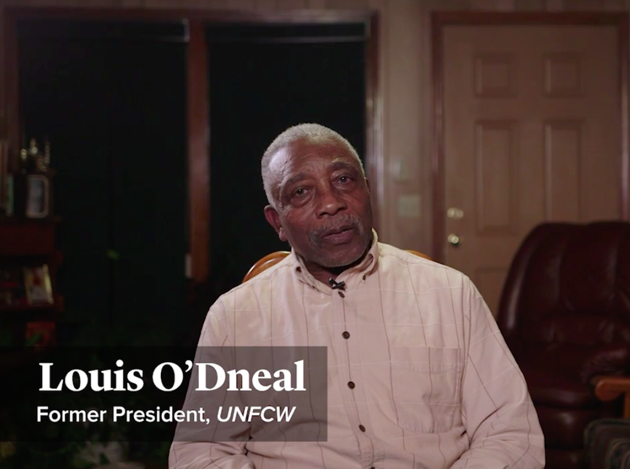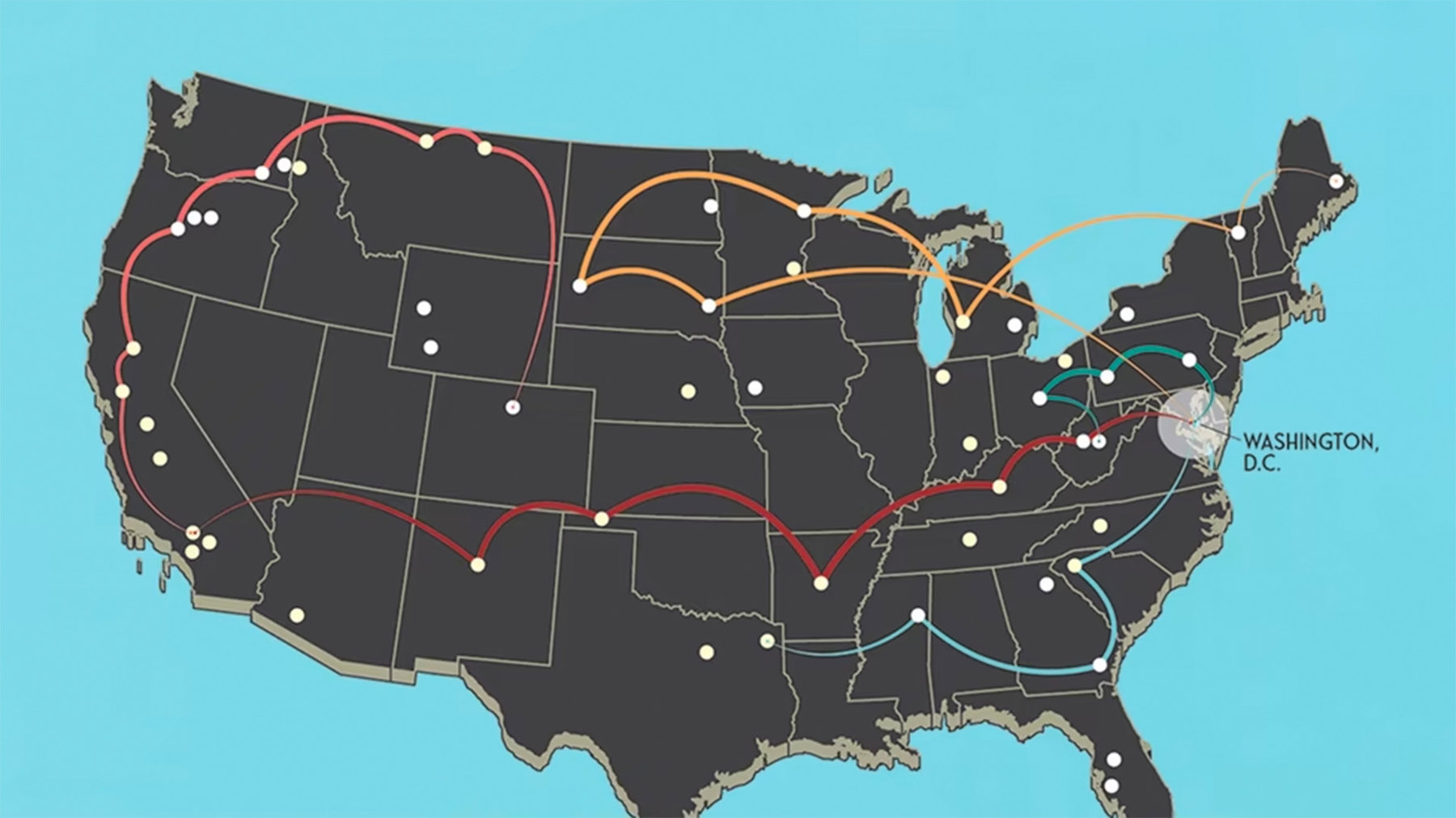It includes a long cover story by me, with great pictures from around the country by noted photographer Mark Peterman; an illustrated map giving an idea of places we’ve gone, shown above; a piece by my wife Deb, about the surprising revival of libraries as civic centers (even in the post-print, post-physical-presence age); a half-whimsical checklist by me, on the ingredients of civic growth; and many other features.
The Atlantic’s video team has also put together a wonderful video, which you can see below, a place we’ve visited many times in our travels. This is the “Golden Triangle” of Mississippi. What I like about this video is that it gives you, in compact form, a very clear idea of the kinds of people we have met and the kinds of stories we have heard, as we’ve been to places that usually show up in the news only when there’s some natural or man-made disaster. Or, in the case of Iowa, New Hampshire, and soon South Carolina, when the presidential-primary season is on.
Here’s the video, which I really hope you will watch at some point.
Atlantic articles, including this one, can be long, as some readers have mentioned over the years. But even we have space constraints! Our stories and the accompanying photos are running as a 15-page presentation in the magazine, which is a lot; even so, there was nearly as much material that we had to leave out.
Some of those themes, and places, have been introduced in the several hundred posts since the summer of 2013 that are collected and categorized on this project page. But several more will be rolled out more formally over the next two weeks, as a kind of Director’s Cut version of the story in the magazine. Among the themes we plan to go into.
1. The role of partnerships and networks. Putting on this project has involved a number of collaborations from the beginning. Any long-married couple can imagine that Deb and I have agreed about some things — most! — and differed about a few over the course of many months on the road. Our friend John Tierney has joined us for some stops and quite a few posts.
Since 2013 we’ve done regular conversations with Kai Ryssdal and his team at Marketplace radio, and have joined them periodically on the road. This evening Marketplace ran a conversation between Kai Ryssdal and me. As I laid out in a presentation to a big conference of the Esri software company back in 2013, we’ve used their mapping technology to illustrate trends and local possibilities. We look forward to continuing all these teamwork efforts, plus of course those within the Atlantic’s own operations.
But before we began traveling we had not imagined how many individuals and groups were allying their efforts to extend the influence of some of the positive developments we have learned about. A few illustrations: a group called The Intersector Project, based in New York, has developed checklists for the way governments, businesses, and civic groups can most effectively work together. Another, called NationSwell, is trying to publicize and link stories and examples of people and groups that have solved complex public problems. The Markle Foundation has sponsored a major effort called Rework America, on how people, schools, companies, and regions can best adapt to the new economic landscape. The Kauffman Foundation, based in Kansas City, sponsors studies on how regions can best promote entrepreneurship. The new Citizen University, based in Seattle, promotes active citizenship in all forms. I mention findings from some of these groups in my article, and we have more to tell.
The science-of-cities is its own fertile ecosystem. Bruce Katz, Amy Liu, and the team of the Metropolitan Policy project at Brookings covered city developments around the world. The National League of Cities is full of findings about U.S. cities, and of course here at the Atlantic we have our own City Lab. The Main Street America project of the National Trust for Historic Preservation has had effects around the country, which we have seen. So has Art Place America.
I won’t go on, for now. I will say that my story ends with an argument that an important task for moving beyond our current era of a Second Gilded Age is connecting the stories and examples of people and places that are figuring out how to cope. We’ll have more to say on this front.
2. The Maker Movement — it’s real. Three years ago, I wrote about how one of the most influential figures in the age of the Chinese-outsourcing booms, a man from Cork, Ireland named Liam Casey, was moving a focus of his activity to the United States. He talked about a new era of dispersed, high-end, “Maker”-style manufacturing across America. We saw that all over the place, as a real economic phenomenon rather than just some chic trend, and well tell more of that story in days to come.
3. Institutional Innovation — even in America. Most people think of America as being “innovative” as concerns the latest delight out of Silicon Valley, or the latest trick from Wall Street. We’re here to tell you that plain old public schools, from elementary level to community college, have become some of the most creative institutions in the country. Stay tuned for details and argument.
4. The regional distinctiveness of a superficially homogenized nation. If you’ve just driven around or gone from one major airport to the next, you can be forgiven for assuming that mainstream American life is all the same. You approach a town through the Applebee’s and the Olive Gardens. You roll past the parking lots for the Wal-Marts and the Costcos, and the cineplexes showing the same six films, and you see the Fairfield Suites and Hampton Inns. You walk into the motel lobbies and see the TV turned to either an NFL or an NBA game, or if not then usually to Fox News. It becomes tempting to assume that the details of life in mainland America are nearly identical, and that regional variations come down to the superficialities of sports-team rooting interests and regional brand variation — A&P supermarkets in the northeast, H-E-B in the southwest — plus the obvious, increasingly tribal red-state/blue-state political divides.
That’s what I might have thought a few years ago. But just as the concentration of ambitious young people in the Brooklyns and San Franciscos coincides with a flow back to the Fresnos and Duluths, so does the spread of nationwide brands and celebrities overlay very acute local awareness of an area’s identities, challenges, and opportunities.
That’s what we’ll tell more about, with stories ranging from Maine to Minnesota to Arizona to Louisiana to California to Idaho to the American Prairie Reserve in Montana.
This is enough for tonight. I hope you’ll enjoy the article, Deb’s post, and the video. And if you check out the video, you’ll see why I’m ending with this picture of Mississippi’s redoubtable Lewis O’Dneal.

A former president of the United Food and Commercial Workers in Mississippi




